Tel: +60 17 293 63 76 | Email : info@synborneo.org
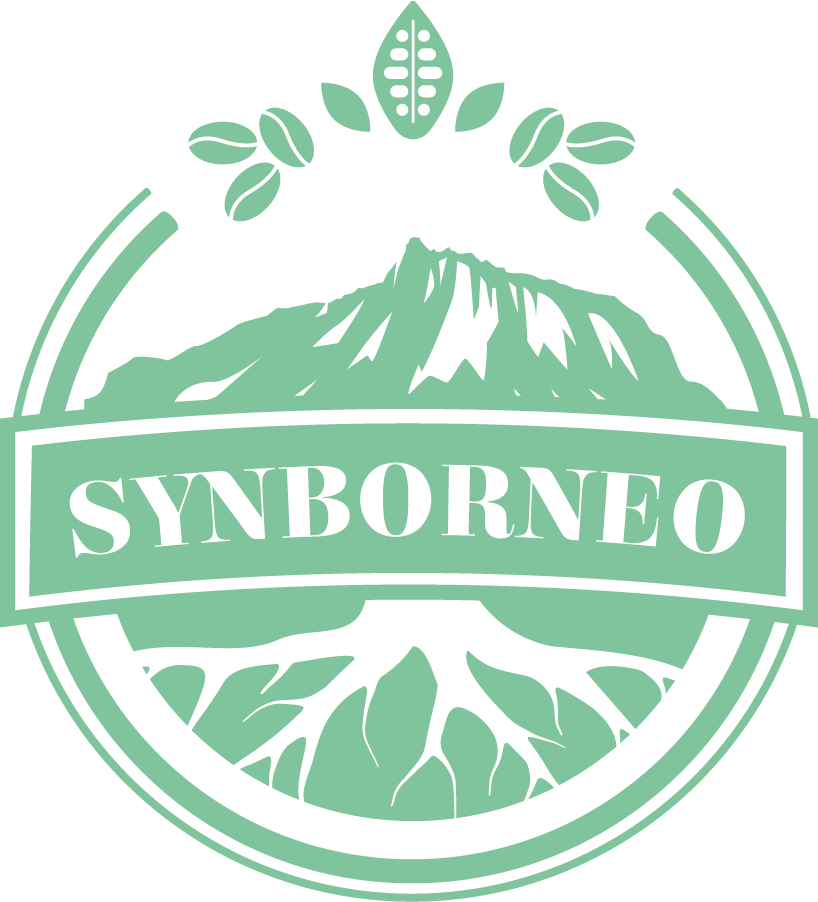
Simon Werren
Dr. Saravana Kumar, MBBS (AIMST), has dedicated 16 years to the medical profession , specialising as a General Practitioner and Occupational Health Specialist for the last 8 years.
Since my Housemanship days in 2008, Sabah has been my cherished home."
BUKIT PITON, THE LOST HOME OF THE ORANGUTANS?
28 May 2019 -- Posted by :The Bukit Piton Forest Reserve, formerly known as the Ulu Segama-Malua (USM) forest, suffered from two destructive fires and poor logging practices. However, through collaborative efforts led by organizations such as WWF-Malaysia, Yayasan Sabah, Sime Darby, and the Sabah Forestry Department, alongside the dedicated team led by Mr. Hoe from Kontraktor Fajar, this degraded forest is undergoing restoration, welcoming back Orangutans and other wildlife to their habitat.
During a reconnaissance tour in late 2016, Bike and Tours ventured into the Bukit Piton Forest Reserve, where they encountered Orangutans in the wild—an awe-inspiring experience. Despite notable progress in forest restoration, challenges remain, particularly in ensuring an adequate food supply for Orangutans and other wildlife. Some replanting efforts have fallen short due to insufficient maintenance, highlighting the ongoing care required for seedlings to thrive.
Pressure from surrounding plantation owners poses a threat to the Bukit Piton area, with demands for conversion to palm oil plantations. However, voices advocating for conservation prevailed, underscoring the importance of ongoing research and action to protect the forest's biodiversity and benefit local communities.
Recognizing the conservation potential of Bukit Piton, Bike and Tours embarked on conservation tourism efforts, allowing visitors to contribute to reforestation by planting trees. Their replanting project, initially modest in scale, emphasizes a commitment to long-term maintenance for sustainable impact. Their proposal, submitted to the Forestry Department, was met with support, enabling them to implement the project starting in June 2017.
As of February 2022, Brothers Cycling remains committed to maintaining 6.5 hectares of forest for five years, with plans to expand to 13 hectares. Their efforts align with the designation of Bukit Piton as a Class 1 Forest Reserve, crucial for safeguarding water supplies, soil fertility, and biodiversity.
While progress has been made, much work remains to fully restore and protect Bukit Piton. With continued support and collaboration, the vision of a thriving, biodiverse forest ecosystem can be realized, benefiting both wildlife and future generations.
So is Bukit Piton the lost soulless jungle?
The declaration of Bukit Piton into Class 1 Forest Reserve is certainly an important step in the right direction. The Class 1 Forest Reserve’s main function is to safeguard water supplies, soil fertility and environmental quality (Sabah Wildlife Department, 2017). The habitat for various wildlife such as the endangered orangutan and storm stork for example makes Bukit Piton very valuable and worthy of protection in any case. There is still a lot to be done in terms of upgrading this conservation area. We strongly believe that we could achieve something with our small contribution. We however, do have the intentions to further contribute to the growth and wellbeing of this jungle. Our dream is to be able to sign up for at least one hectare every year. In which case we need your support. Planting a tree with 5 years maintenance until it can grow on its own would need about CHF70 per tree. An annual membership is required so more trees can be planted each year. A minimum aim of 160 members is required so that we can automatically reach the goal of 1 hectare per year.
We truly hope that we could gain your support to bring life and soul to Bukit Piton once again.
Plant trees in Lahad Datu (project description)
The total surface area of Sabah is about 7.4 million ha and about 50% of this area is still classified as forest area. Sabah forest has one of the most diverse flora and fauna in the world. In the past, irresponsible logging practices and illegal encroachment activities has contributed to a badly damaged Sabah forest. About more than half of Sabah forest area is in dire need to be replanted with indigenous tree species and restored to its’ original stage. One of the most important reasons to restore a degraded forest in Sabah is due to the important fact that it still the canopy for lots of wildlife, birds and particularly the endangered species of orangutan and elephants.
Reality is, a degraded forest is not able to recover on its own. The Sabah forest needs our help to restore and preserve the diverse flora and fauna for future generation.
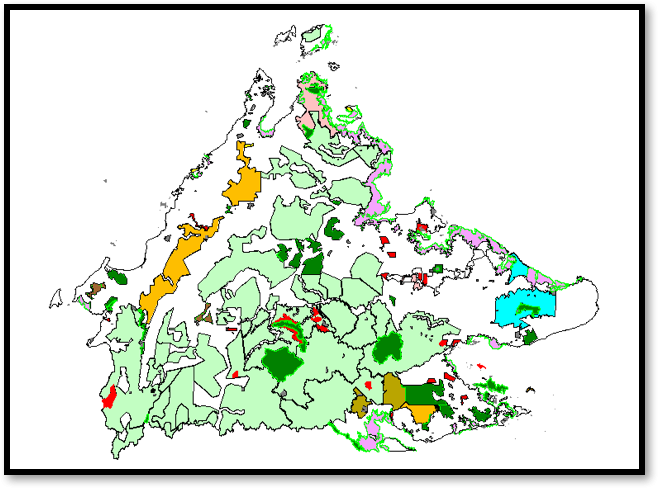
We can restore Sabah degraded forest by engaging in realistic tree planting activities. Over the last 20 years, Sabah Forestry Department (SFD) have been promoting tree planting and silvicuture projects to restore degraded forest in Sabah. SFD has stop issuing small timber harvesting license that has caused tremendous damage to forest. SFD now favors large scale, long term, sustainable and good forest management practices. About 2 million ha of Sabah forest is now under such forest management called Forest Management Unit (FMU). The FMU is strictly monitored by SFD and they are responsibible to protect the forest and manage its sustainability. This policy have improved forest status as FMU are responsible at ensuring timber harvesting activities are done sustainably and degraded forest areas are restored.
One of the most important SFD policy is to covert 30% of Sabah’s forest area into forest conservation area (Class One- Protection Forest Reserve (PFR)). The conversion to PFR area is especially important for forest area that is habitat for wildlife such as the orangutans and elephants. A lot of PFR areas consists of degraded forest due to past illegal harvesting and encroachment. The recent trend of PFR converted area are the areas which was once badly logged. Most of the PFR needs either silviculture or planting treatments to restore the forest to once its original structure.
SFD together with the Sabah and Federal Governments financial assistant have conducted many forest restoration projects in Sabah. Non Government Organization (NGO) such as WWF Malaysia, Sabah Foundation, Sime Darby Foundation and others are major donors in forest restoration projects in Sabah. Despite government and NGO efforts, the progress of forest restoration in Sabah is slow. This is due to unsustainable, inconsistent and delays in financial support to maintain the planted seedlings.
It must be realized that restoring a degraded forest is a long term commitment. Consistent financial support is needed to be able to successfully restore forest. To restore 1 ha of degraded forest successfully the procedures are as follow;
1 . Planting layout is 8m x 8m. The planting density is about 156 seedlings per ha.
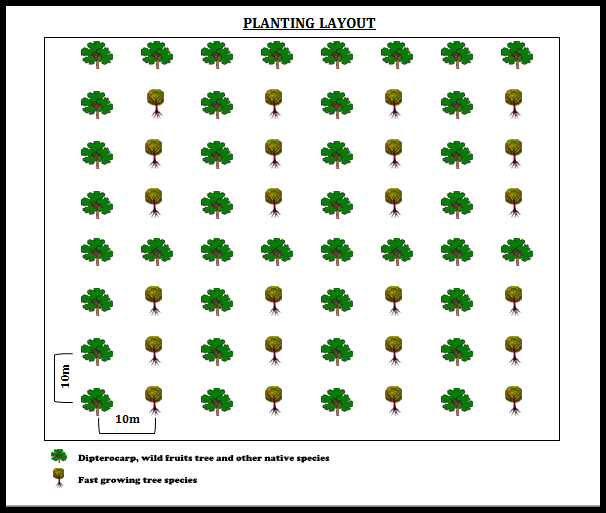
2. Site preparation for planting. Have to create 8m parallel planting lines and plant every 8m planting point along the line. Planting lines have to be created by cuting into secondary vegetation. Opening width of planting line is at about 1.5 m. All secondary vegetation directly affecting the planting site, climber and debris should be cleared in the planting line. The planting point should be opened in a 2.5m x 2.5 m square approximately. All lines and points is recorded for checking and monitoring.
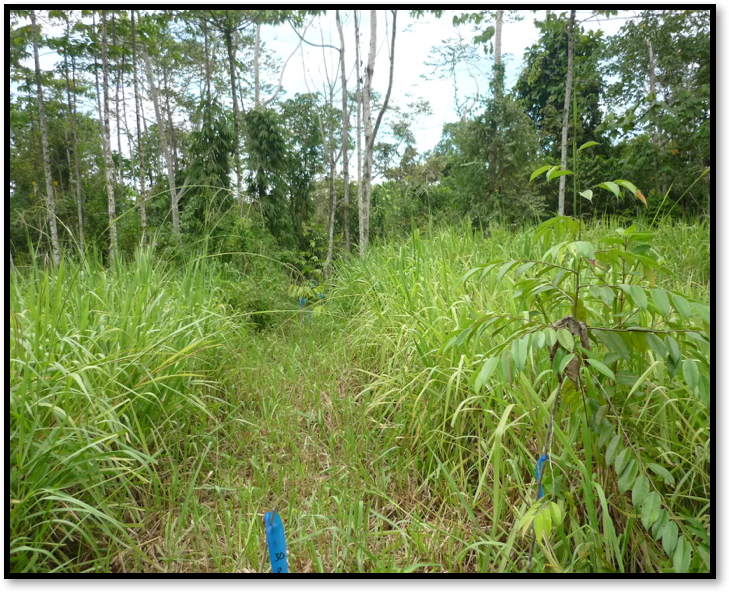
3. Planting of seedling. Only indigenous tree species of Borneo will be selected for planting. Seedling selected from nursery must be harden and strong before they are planted.
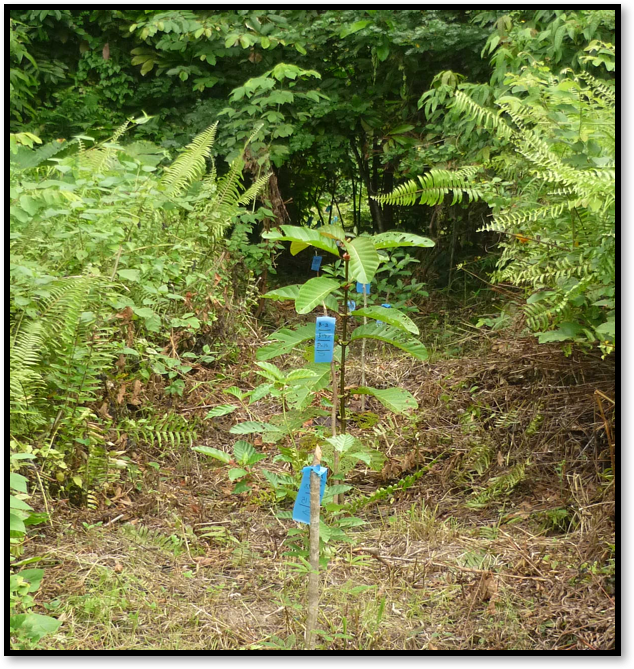
4. Maintenance of planted seedling. The first maintenance at 2 months after planting must be conducted. Following which, every 3 months for 20 rounds (5 years). During maintenence all vegetative weed that is affecting the planted seedling is to be removed around planted seedlings and replant all of the dead seedlings.
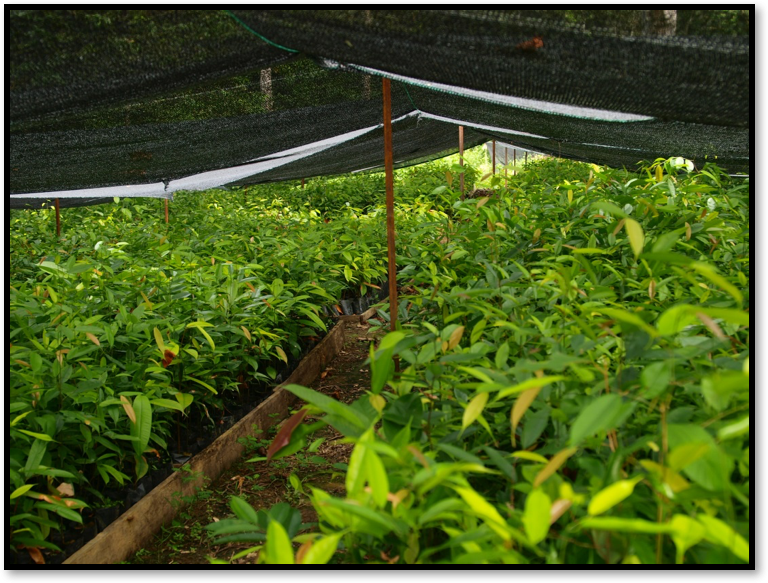
Kontraktor Fajar is the contractor in charge for planting and maintainance of the seedlings. Kontraktor Fajar has been working very closely with SFD throughout the years and have been involved in a lot of forest restoration works in Sabah. They offer their service to any person, company and/or association that is willing to commit to forest restoration be it big or small. They are the subject matter experts in the forest and knows the location of the degraded forest and unfinished forest restoration. It is with knowledge that they recommend those who are interested at reviving the jungle on which areas to plant new tress/continue maintainance. It is with hope that with any donation or contribution whether it is big or small are the vital key success forest restoration in Sabah.
